Key takeaways:
- Home cooking serves as a creative outlet, fostering emotional connections and memories while providing a sense of calm amidst life’s chaos.
- Cooking at home promotes healthier eating, mindfulness, and strengthens relationships through shared meals, creating a profound sense of accomplishment.
- Essential cooking tools, effective meal planning techniques, and flavor-enhancing tips, like using fresh herbs and acids, significantly enhance the cooking experience and enjoyment.
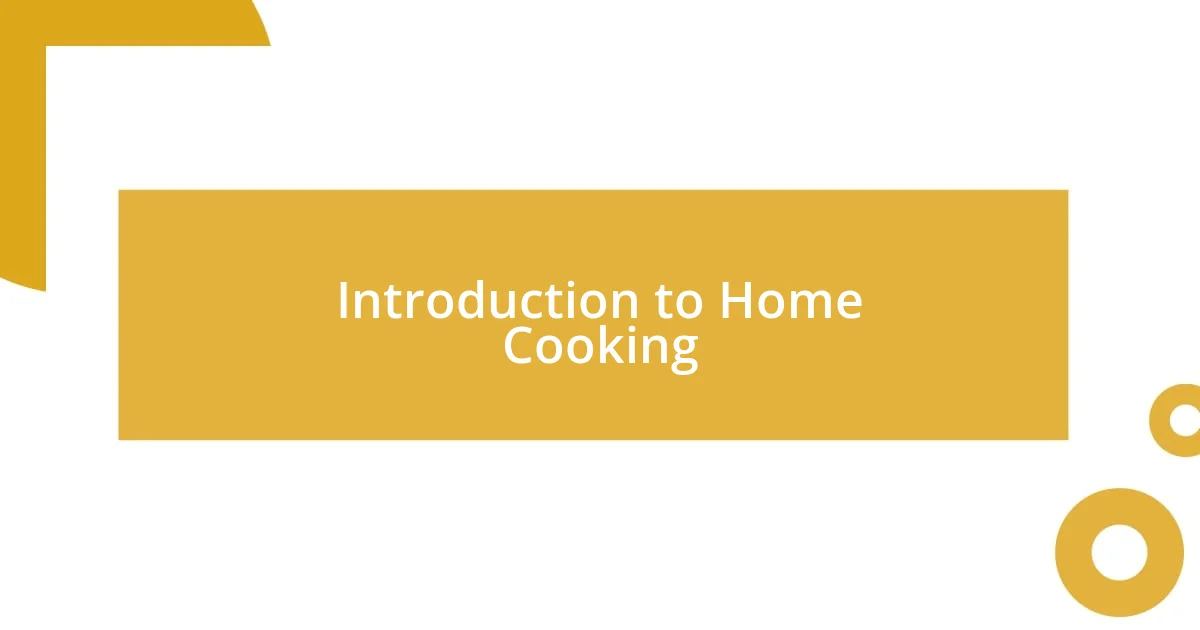
Introduction to Home Cooking
Home cooking has always been a gateway to creativity for me. I remember the first dish I ever made—a simple spaghetti aglio e olio. As the aroma of garlic filled the kitchen, I felt an exhilarating mix of nervousness and excitement. It’s amazing how something so basic can evoke such a rich emotional response and remind me of shared meals with family.
When I think about the act of cooking at home, I can’t help but wonder: what stories do our meals tell? Each time we gather around the table, we create not just sustenance, but memories and connections. There’s something deeply fulfilling about chopping fresh vegetables or simmering a pot of soup, knowing that it’s an act of love that will nourish those I care about.
Cooking at home can also feel like a comforting ritual amidst the chaos of life. After a long day, reverting to the familiar act of whisking eggs or kneading dough brings a sense of calm. The flavors and textures I experiment with not only satisfy my hunger but also serve as an outlet for my emotions, allowing me to express myself in ways that words sometimes fall short. Isn’t it incredible how food can both ground us and transport us to different times and places in our memories?
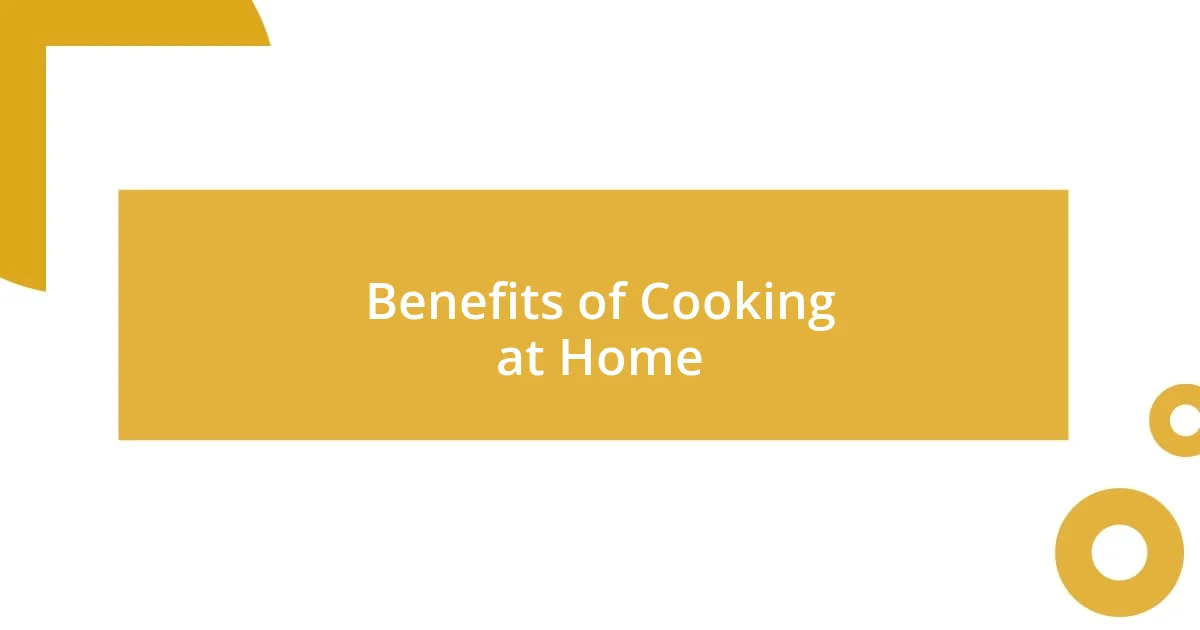
Benefits of Cooking at Home
Cooking at home brings multiple benefits that enhance both our physical health and emotional well-being. For instance, I find that preparing my meals allows me to be mindful of the ingredients I’m using. This not only means I can avoid unhealthy additives but also leads me to discover fascinating new flavors and textures. Each time I reach for fresh herbs or select seasonal vegetables, I feel a sense of pride in knowing exactly what goes into my body.
Moreover, there’s a profound sense of accomplishment that comes from crafting a dish from scratch. Recently, I attempted homemade pizza, and the joy of watching the dough rise while I savored the aroma of melting cheese was unforgettable. It’s moments like these that remind me: cooking isn’t just about eating; it’s about creating. Each meal becomes a small personal victory, making me more confident in the kitchen.
Finally, cooking at home fosters connections, whether with family or friends. I can remember hosting a small dinner party where I prepared a hearty chili. We laughed, shared stories, and enjoyed the meal together. There’s something magical about sharing food that transforms the atmosphere, making everyone feel at home and included. Each dish has its own story, isn’t that what we seek in our everyday lives?
| Benefit | Description |
|---|---|
| Healthier Options | Control over ingredients and portion sizes leads to better nutrition. |
| Mindfulness | Engaging in cooking allows for relaxation and creativity. |
| Connection | Cooking shared meals strengthens bonds and creates memories with loved ones. |
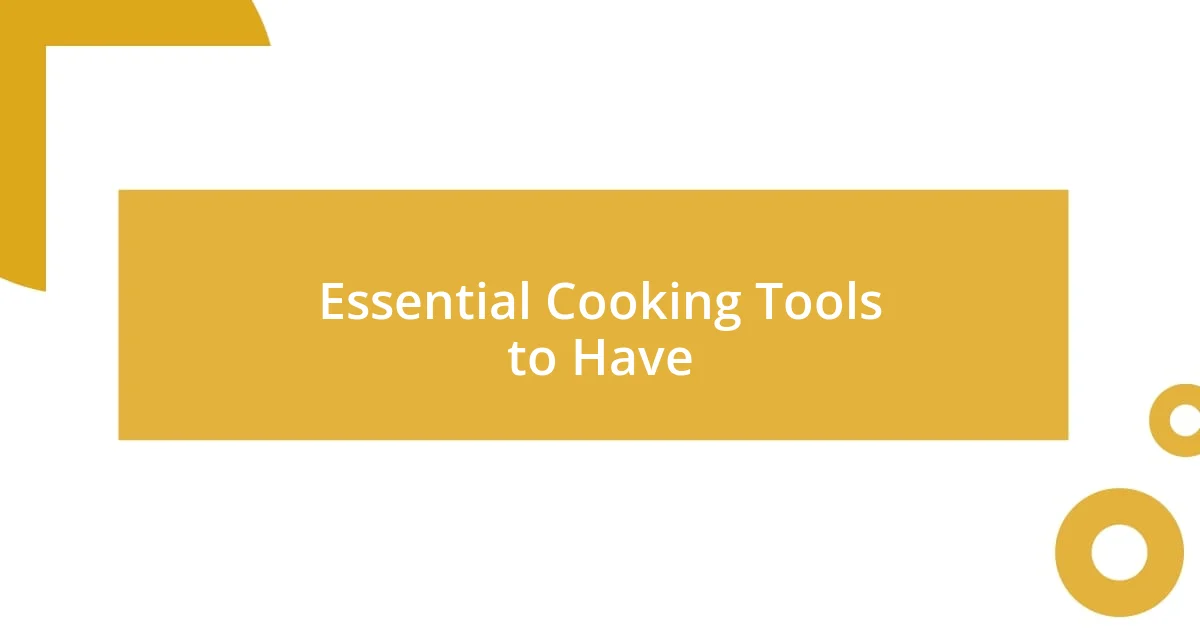
Essential Cooking Tools to Have
When it comes to essential cooking tools, having the right gear can make a world of difference in your kitchen experience. I remember the first time I realized the importance of a good chef’s knife. It wasn’t just about cutting; it was about the ease it brought to chopping vegetables. Suddenly, prepping meals became less of a chore and more of a joyful activity. A sharp knife can truly empower your culinary journey and help you embrace the art of cooking.
Here are some must-have tools to enhance your cooking experience:
- Chef’s Knife: The cornerstone of any kitchen; it makes chopping efficient and enjoyable.
- Cutting Board: A sturdy surface to protect countertops and provide a clean area for food prep.
- Cast Iron Skillet: Versatile for both stovetop and oven, it creates that perfect sear on meats and can go from breakfast to dinner seamlessly.
- Measuring Cups and Spoons: Essential for precision, especially when trying out new recipes or baking.
- Mixing Bowls: These come in handy for everything from tossing salads to preparing ingredients for cooking.
- Wooden Spoon: Gentle on cookware and great for mixing; I love the tactile connection it gives me to my food.
The right tools can elevate the cooking experience, enabling you to explore new recipes and flavors with ease. When I finally invested in a high-quality non-stick pan, it felt like a game changer for breakfast. Flipping eggs without worry of them sticking brought an unexpected joy to my morning routine. I now embrace breakfast experimentation, trying everything from fluffy omelets to banana pancakes, and it all started with a simple pan.
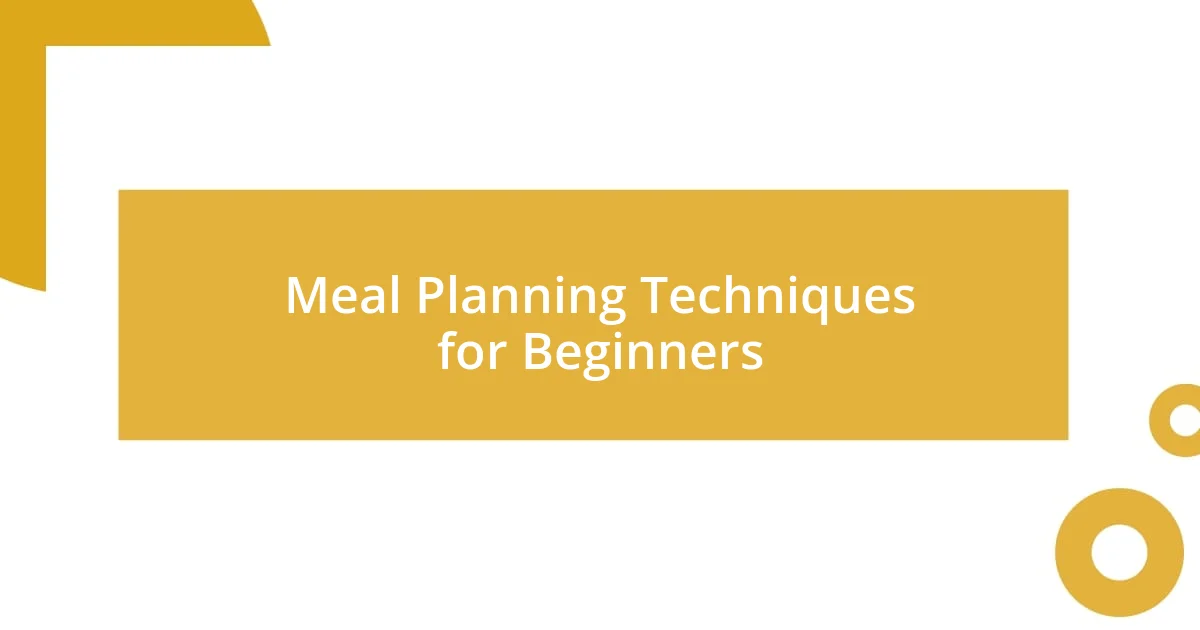
Meal Planning Techniques for Beginners
One effective technique I’ve found in meal planning is utilizing a weekly menu. This approach has significantly simplified my grocery shopping and reduced the stress of last-minute cooking decisions. For example, when I first started, I dedicated Sunday afternoons to map out meals for the week ahead. It was such a relief to know exactly what I would be cooking each night. I even discovered that I could tackle grocery shopping in one go, which saved me time and money!
Another method that works wonders is batch cooking. I still remember my first attempt: a big pot of chili. I made enough to last me for several days, and the flavors only improved with time. Not only did this strategy mean I had delicious meals ready to go, but it also freed up my evenings for other activities. Imagine having dinner sorted without the hassle of preparation every single night—what a game changer that was!
Lastly, I highly recommend keeping a flexible pantry inventory. I used to be overwhelmed by the thought of meal planning until I understood how to rotate ingredients based on what I already had. Now, I can whip up spontaneous dishes inspired by what’s in my pantry, all while ensuring nothing goes to waste. Have you ever opened your fridge and felt creatively inspired? That rush of inventiveness can turn cooking into a fun adventure rather than a chore!

Tips for Enhancing Flavor
When it comes to enhancing flavor, I’ve found that fresh herbs make a remarkable difference in any dish. I’ll never forget the first time I used basil straight from my garden in a simple tomato sauce. The explosion of fragrance as I chopped it brought a new life to the dish, far beyond anything store-bought could accomplish. Have you ever considered how a handful of fresh herbs can transform your meals? It’s like adding a secret ingredient that elevates every bite.
Another effective tip is to experiment with various salts. I recently tried smoked sea salt while making roasted vegetables, and the subtle hint of smokiness was a revelation. It’s amazing how a different type of salt can bring out unique flavors. The same goes for flavored oils; a drizzle of garlic-infused olive oil over pasta can create a harmonious blend that feels gourmet. Have you ever explored the world of salts and oils? It’s a delightful journey worth taking.
Don’t underestimate the power of acid, either. A splash of lemon juice or a dash of vinegar can brighten a dish in ways you might not expect. I remember making a rich cheese risotto and feeling it needed something extra; a little squeeze of lemon took it from good to great. It’s interesting how changing something so simple can completely alter a meal’s profile. What’s your go-to method to add a little zing? Trust me, a touch of acidity can be the key to unlocking your dish’s true potential.
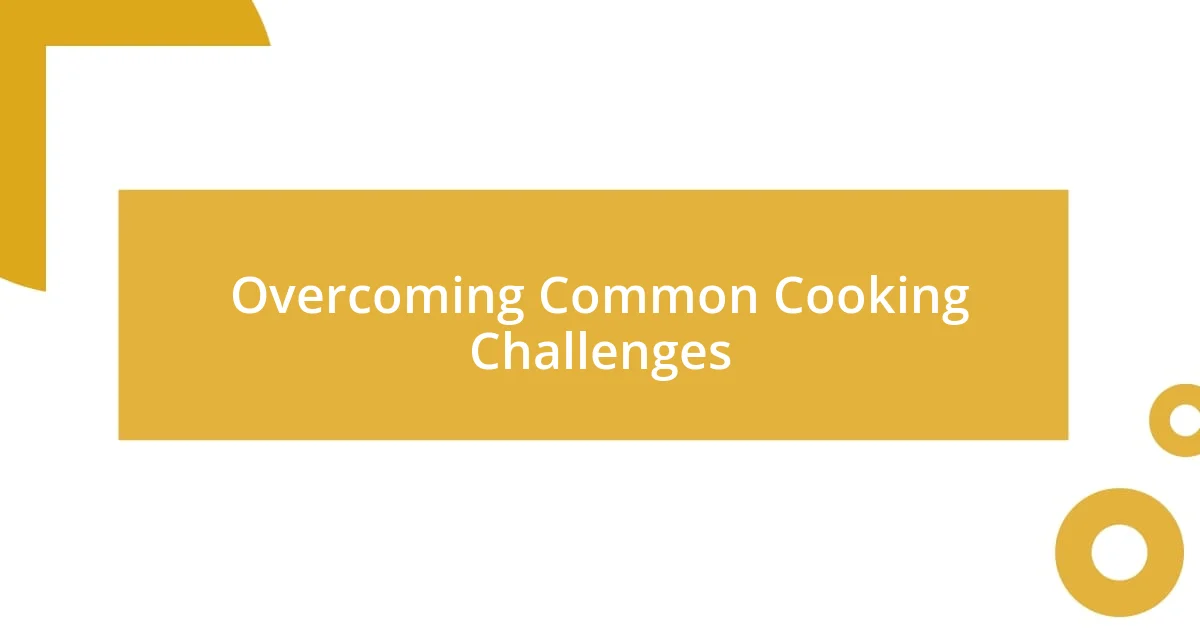
Overcoming Common Cooking Challenges
Cooking can sometimes feel like an uphill battle, especially when unexpected challenges arise. I remember tackling my first complicated recipe, where I was left scrambling when an ingredient I thought I had ran out. It felt like a disaster at first, but that experience taught me the importance of improvisation. Have you ever had to adapt a recipe on the fly? I found that by thinking outside the box, I discovered new flavor combinations and techniques I wouldn’t have considered otherwise.
Another challenge I faced was managing cooking times for multiple dishes. I can think back to one chaotic dinner where I burned the chicken because I was too focused on boiling pasta. It was a lesson learned the hard way! Now, I make it a habit to read through recipes and time my prep work in advance. By aligning everything from chopping vegetables to timing the oven, I can juggle multiple dishes without feeling overwhelmed. This strategic approach not only saves time but also keeps my kitchen calm. How do you manage timing when cooking?
Additionally, I often grappled with messiness in the kitchen, which can be discouraging. It used to feel like a chore to clean up after a long cooking session, but I found a solution that changed my perspective. By employing the “clean as you go” technique, I discovered that tidying up small spills and washing utensils while the food cooked turned my cooking experience into a more enjoyable activity. Have you tried this approach? It makes the end of the meal feel less like a daunting cleanup and more like a celebration of creativity!















